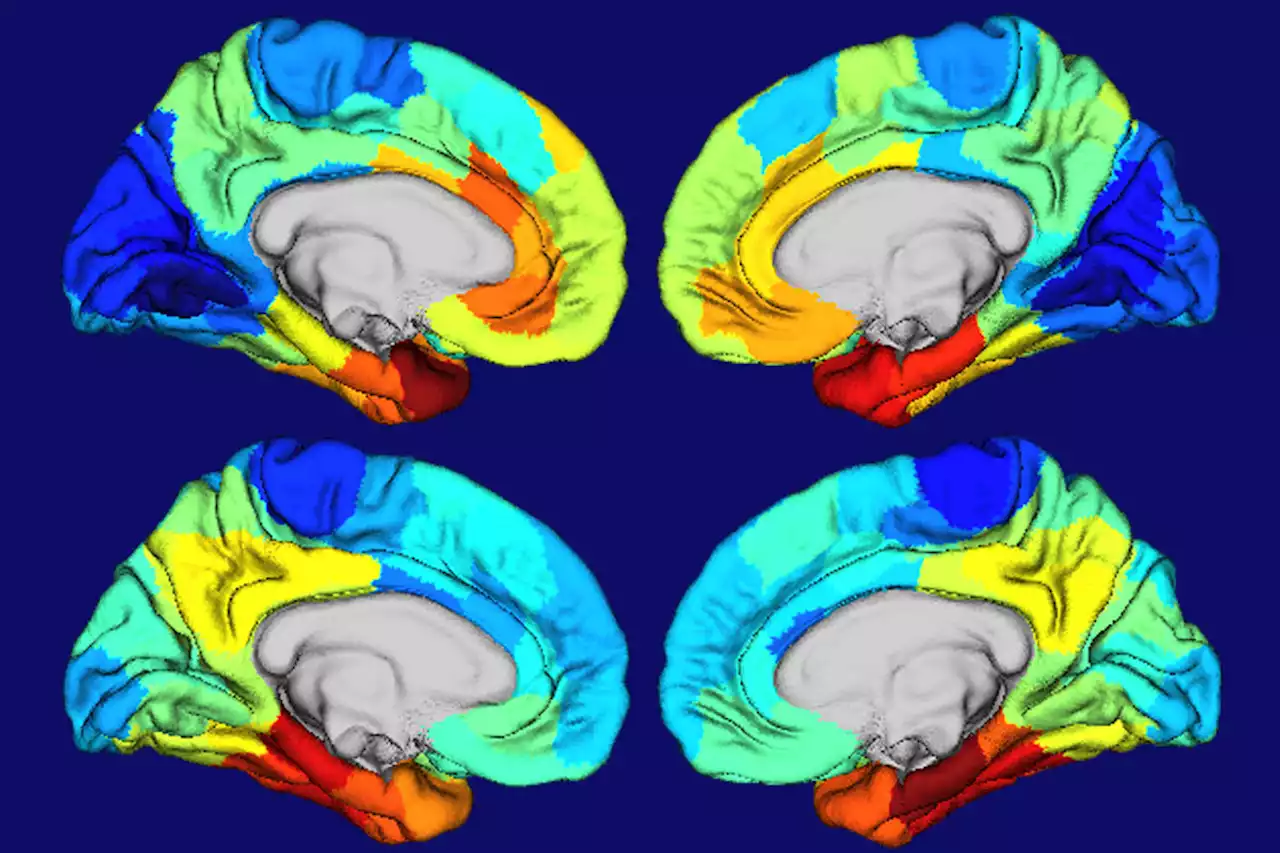Research findings could help explain rare symptoms such as problems with language and vision. The first sign of Alzheimer’s disease is typically memory loss, followed by confusion and difficulty thinking. These symptoms reflect the typical pattern of progressively worsening damage to brain tissue
Red and orange areas on these heat maps of human brains show where the gene APOE is most active and where tangles of the protein tau are most concentrated . APOE is the biggest genetic risk factor for Alzheimer’s, and tau tangles drive brain damage in the disease. The similarities in the two sets of maps suggested to researchers at Washington University School of Medicine in St. Louis that APOE plays a role in making certain brain areas particularly vulnerable to Alzheimer’s damage.
“There are some rare, atypical forms of Alzheimer’s in which people first develop language or vision problems rather than memory problems,” said senior author Brian A. Gordon, PhD, an assistant professor of radiology at the School of Medicine’s Mallinckrodt Institute of Radiology. Alzheimer’s disease begins with a brain protein known as amyloid beta. The protein starts building up into plaques two decades or more before people show the first signs of neurological problems. After years of amyloid accumulation, tangles of tau — another brain protein — begin to form. Soon after, tissues in the affected areas begin to wither and die, and cognitive decline sets in.
United States Latest News, United States Headlines
Similar News:You can also read news stories similar to this one that we have collected from other news sources.
 Study tracks Arctic animals’ exposure to disease better known in Interior Alaska: Tularemia, or ‘rabbit fever’A wide variety of animals in the rapidly warming Arctic, including polar bears, are being exposed to a tick-borne pathogen normally associated with rabbits and hares, a new study says. via AlaskaBeacon
Study tracks Arctic animals’ exposure to disease better known in Interior Alaska: Tularemia, or ‘rabbit fever’A wide variety of animals in the rapidly warming Arctic, including polar bears, are being exposed to a tick-borne pathogen normally associated with rabbits and hares, a new study says. via AlaskaBeacon
Read more »
 'Kidney disease is not just a death sentence, you can live a full life'Podcaster Dee Moore, who has chronic kidney disease, is using her knowledge to help others.
'Kidney disease is not just a death sentence, you can live a full life'Podcaster Dee Moore, who has chronic kidney disease, is using her knowledge to help others.
Read more »
 This year's holiday season is making infectious disease doctors very nervousLooming over the holiday season this winter are three viruses instead of two: RSV, COVID and flu.
This year's holiday season is making infectious disease doctors very nervousLooming over the holiday season this winter are three viruses instead of two: RSV, COVID and flu.
Read more »
